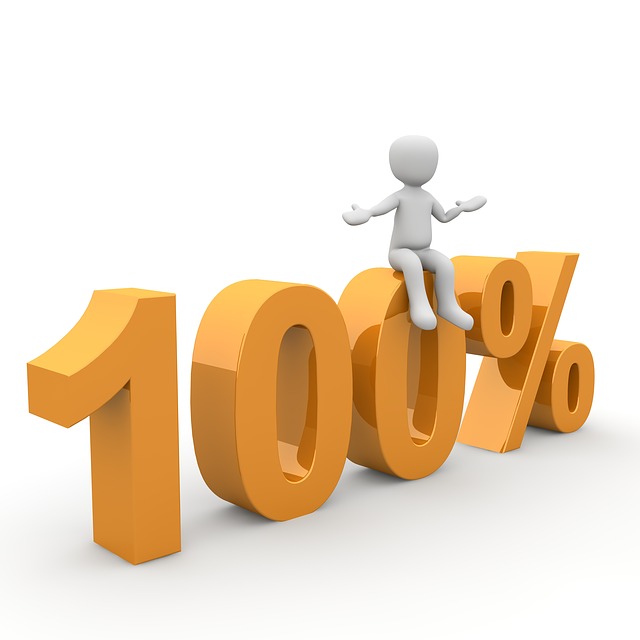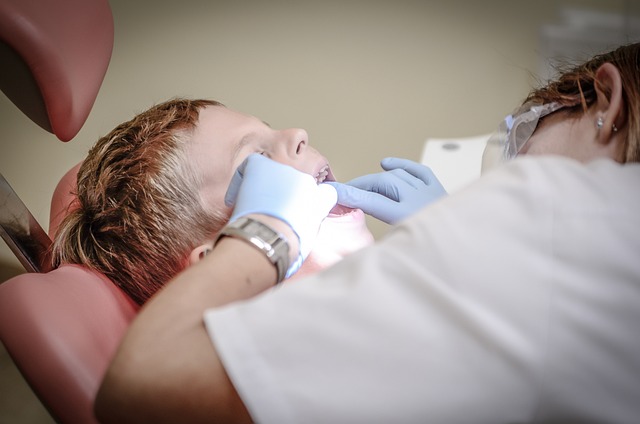Discovering the Best Retainer for Your Orthodontic Needs
Are you on the journey to a straighter, more confident smile? If so, you’re likely familiar with the orthodontic world and the importance of retainers in maintaining your newly aligned teeth. But with so many options available, how do you go about discovering the best retainer for your orthodontic needs? Fear not, as we delve into the realm of orthodontic retainers, we will equip you with the knowledge and confidence to make an informed decision. In this article, we will explore the various types of retainers, their benefits, and help you find the perfect fit for your unique dental situation. Get ready to unlock the secrets of selecting the ideal retainer that will preserve your dazzling smile for years to come.
1. Understanding the Importance of Retainers in Orthodontic Treatment
Retainers play a crucial role in orthodontic treatment, serving as a key component in maintaining the results achieved through braces or aligners. After your teeth have been straightened, it is important to understand the significance of wearing retainers to prevent any relapse or shifting of the teeth. Here are a few reasons why retainers are essential:
- Preserving the alignment: Retainers help to hold your teeth in their correct position, allowing the surrounding structures such as gums and bone to adapt to the new alignment. This helps to ensure that your teeth remain in their optimal position and do not shift back to their original state.
- Preventing overcrowding: Without retainers, there is a risk of overcrowding as teeth have a natural tendency to drift towards their original positions. Wearing retainers as directed by your orthodontist can help prevent this and maintain the correct spacing between your teeth.
It is important to follow your orthodontist’s instructions regarding retainer wear and care. Typically, retainers are recommended to be worn for a certain period, often full-time initially, and then gradually transitioned to nighttime wear. Regularly cleaning your retainers and storing them properly when not in use will ensure their longevity and effectiveness. Remember, consistency in wearing and caring for your retainers will help preserve your beautiful smile for years to come!

2. Exploring the Different Types of Retainers Available for Orthodontic Needs
When it comes to orthodontic treatment, retainers play a crucial role in maintaining the results achieved by braces or aligners. There are several types of retainers available, each with its own unique features and benefits. Here, we will explore the different types of retainers that are commonly used in orthodontic practices:
1. Hawley Retainers: This type of retainer consists of a thin metal wire that goes across the front teeth and is attached to a plastic or acrylic plate that sits against the roof of the mouth or behind the lower teeth. Hawley retainers are adjustable and can be customized to fit each patient’s unique dental anatomy. They are easily removable and allow for easy cleaning. The plastic plate can also be personalized with various colors and designs.
2. Clear Retainers: Clear retainers are made of a transparent plastic material, usually molded to fit over the teeth snugly. These retainers are virtually invisible when worn, making them a popular choice for patients who want to maintain their orthodontic results discreetly. Clear retainers are easy to clean and are comfortable to wear. However, they may be more prone to cracking or breaking compared to other types of retainers.

3. Factors to Consider when Selecting the Best Retainer for Your Orthodontic Treatment
When it comes to selecting the best retainer for your orthodontic treatment, there are several important factors to consider. Making the right choice will ensure the success of your treatment and help maintain the results achieved. Here are some key factors to keep in mind:
1. Type of Retainer: There are different types of retainers available, including removable retainers, fixed retainers, and clear aligner-style retainers. Each type has its own advantages and considerations. Removable retainers are convenient for eating and cleaning, but they require consistent wear. Fixed retainers are permanently attached to the teeth and provide continuous retention, but they can be more challenging to clean. Clear aligner-style retainers offer a discreet option for retention, but may not be suitable for everyone. Consider your lifestyle, preferences, and orthodontist’s recommendations when choosing the type of retainer.
2. Comfort and Fit: It’s essential to select a retainer that is comfortable to wear and fits properly. Ill-fitting retainers can cause discomfort, speech difficulties, and inadequate retention. During the selection process, try different retainers to find one that feels comfortable and fits securely. Your orthodontist will take measurements and impressions to customize the retainer to your unique dental structure. A well-fitted retainer will ensure optimal retention and maximum comfort throughout your orthodontic treatment.

4. Comparing the Pros and Cons of Removable Retainers: Hawley vs. Essix
When it comes to choosing between removable retainers, two popular options are Hawley and Essix retainers. Both have their pros and cons, and understanding these can help you make an informed decision.
Hawley retainers have been a staple in orthodontics for decades. They consist of a metal wire that runs across the front teeth and is anchored by acrylic material that sits on the roof of the mouth. Some pros of Hawley retainers include:
- Customizable: Hawley retainers can be adjusted to fit the unique shape of your teeth, allowing for a more personalized fit.
- Durable: The metal wire in Hawley retainers makes them sturdy and less prone to breakage.
- Longevity: With proper care, Hawley retainers can last for several years.
Essix retainers, on the other hand, are made from clear plastic and fit snugly over the teeth. Here are some pros of Essix retainers:
- Esthetics: Essix retainers are virtually invisible, making them a more aesthetically pleasing option for those concerned about the appearance of their retainers.
- Comfort: The smooth plastic material of Essix retainers can be more comfortable to wear, without any metal components.
- Convenience: Essix retainers are easy to remove and clean, allowing for better oral hygiene maintenance.
Ultimately, the choice between Hawley and Essix retainers depends on your specific needs and preferences. Consulting with your orthodontist will help determine which type of retainer is best suited for your individual situation.

5. The Advantages and Disadvantages of Fixed Retainers for Orthodontic Maintenance
Fixed retainers are a common option for orthodontic maintenance after braces or aligners are removed. They have several advantages that make them a popular choice for patients. Firstly, fixed retainers are incredibly convenient. Once they are placed by the orthodontist, there is no need for the patient to worry about remembering to wear and remove them like with removable retainers. This makes them a great option for individuals who may be forgetful or have a busy lifestyle.
Moreover, fixed retainers provide continuous and long-term stability to the teeth. They are bonded to the back of the teeth, ensuring that they stay in place and maintain the corrected alignment. This is particularly beneficial for individuals who have experienced significant teeth shifting in the past or have a higher risk of relapse. Fixed retainers also allow for better oral hygiene compared to removable retainers. Since they are always in place, there is no chance of accidentally misplacing or losing them, and they do not require daily cleaning or soaking. This makes it easier for patients to maintain good oral hygiene habits and reduces the risk of tooth decay or gum disease.
6. Custom or Stock: Which Option is Right for Your Retainer Needs?
When it comes to choosing the right option for your retainer needs, you may find yourself debating between custom or stock retainers. Each option has its own advantages and considerations, so it’s important to weigh them before making a decision.
Custom retainers offer a personalized fit and are tailor-made to your specific requirements. They are crafted using detailed measurements of your teeth and provide optimal comfort and effectiveness. With a custom retainer, you can expect a perfect fit that ensures proper alignment and prevents any unnecessary movement. Additionally, custom retainers can be designed to match your individual style, allowing you to express yourself while maintaining your oral health.
- Advantages of Custom Retainers:
- Personalized fit for optimal comfort and effectiveness
- Prevents unnecessary movement and maintains proper alignment
- Can be designed to match your individual style
- Considerations for Custom Retainers:
- May be more expensive than stock retainers
- Requires a visit to the orthodontist for measurements
On the other hand, stock retainers are ready-made and available in standard sizes. They are usually more affordable and can be conveniently purchased from dental supply stores or online. While they may not offer the same level of customization as custom retainers, stock retainers can still provide adequate support for most individuals. It’s important to note that stock retainers may not fit as comfortably as custom ones and may cause slight discomfort or soreness initially.
- Advantages of Stock Retainers:
- More affordable than custom retainers
- Readily available and can be purchased online or from dental supply stores
- Considerations for Stock Retainers:
- May not fit as comfortably as custom retainers
- Could cause slight discomfort or soreness initially
7. Expert Tips for Proper Care and Maintenance of Orthodontic Retainers
Proper care and maintenance of orthodontic retainers are essential to ensure their longevity and effectiveness. Here, we share some expert tips to help you keep your retainers in top condition:
- Brushing: Brush your retainers daily with a soft toothbrush and non-abrasive toothpaste. This will help remove any plaque or bacteria buildup and prevent odors.
- Soaking: Soak your retainers regularly in a denture cleaner or a mixture of equal parts water and mouthwash. This helps to disinfect and freshen them up.
- Handling: Always handle your retainers with clean hands to avoid transferring bacteria. When removing them, hold onto the base or wire, ensuring not to bend or distort their shape.
- Storing: When not in use, store your retainers in a protective case to prevent damage or loss. Avoid leaving them out in the open or wrapping them in tissue, as this can lead to misplacement or accidental damage.
Remember to schedule regular check-ups with your orthodontist to ensure your retainers fit properly and are still effective. By following these expert tips, you can maintain the hygiene and functionality of your orthodontic retainers, ultimately protecting your investment in a beautifully aligned smile.
Frequently Asked Questions
Q: What is a retainer and why is it important in orthodontics?
A: A retainer is a custom-made dental device used to maintain the position of teeth after orthodontic treatment. It is crucial in preventing teeth from shifting back to their original positions, ensuring the longevity and effectiveness of the treatment.
Q: How often should I wear my retainer?
A: The frequency of retainer wear varies depending on individual cases. In general, orthodontists recommend wearing retainers full-time for the first few months after treatment, then transitioning to night-time wear only. It is essential to follow the specific instructions provided by your orthodontist to ensure optimal results.
Q: Are there different types of retainers available?
A: Yes, there are several types of retainers available to suit different orthodontic needs. The most common types include removable retainers, such as Hawley retainers and clear aligner retainers, as well as fixed retainers that are bonded to the back of the teeth.
Q: What are the advantages of removable retainers?
A: Removable retainers, like Hawley retainers and clear aligner retainers, offer the advantage of being easily removable for cleaning and maintenance. They are usually more comfortable and allow for easier oral hygiene compared to fixed retainers.
Q: Are fixed retainers a better option?
A: Fixed retainers, also known as bonded retainers, are permanently attached to the teeth, providing continuous support. They eliminate the risk of forgetting to wear the retainer and require no extra effort for insertion or removal. Fixed retainers are particularly recommended for patients with a higher risk of relapse.
Q: How do I choose the best retainer for my needs?
A: The best retainer for your needs will depend on various factors, including the complexity of your orthodontic treatment, your oral hygiene habits, and personal preferences. It is crucial to consult with your orthodontist, who will assess your specific situation and recommend the most suitable retainer option for you.
Q: Can I switch between different types of retainers?
A: In some cases, it may be possible to switch between different types of retainers after orthodontic treatment. However, this should be done under the guidance of your orthodontist. They will consider the stability of your teeth and the desired outcome to determine if a switch is appropriate.
Q: How long will I need to wear a retainer?
A: The duration of retainer wear varies depending on individual cases. Typically, orthodontists recommend wearing retainers for an extended period, often several years. However, the exact duration will be determined by your orthodontist, who will monitor the stability of your teeth and the progress of your treatment.
Q: How should I care for my retainer?
A: Proper care and maintenance of your retainer are crucial to ensure its longevity and effectiveness. Removable retainers should be cleaned daily using a gentle brush and non-abrasive toothpaste or retainer cleaner. Fixed retainers require regular dental visits for professional cleaning and monitoring.
Q: What should I do if my retainer gets damaged or lost?
A: If your retainer gets damaged or lost, it is essential to contact your orthodontist immediately. They will advise you on the necessary steps, which may include getting a replacement or undergoing a repair procedure. Avoid delaying the process, as prolonged retainer absence can lead to teeth shifting.
Insights and Conclusions
In conclusion, discovering the best retainer for your orthodontic needs is an important step towards maintaining a straight and healthy smile. By considering the various types of retainers available, such as Hawley, Essix, and bonded retainers, you can make an informed decision that suits your lifestyle and preferences. Remember, regular retainer wear is crucial to prevent teeth from shifting back to their original positions. Consulting with your orthodontist is key to ensure a customized retainer that fits perfectly and addresses your unique requirements. So, embrace the journey of orthodontic care and enjoy the long-term benefits of a confident and beautiful smile.






